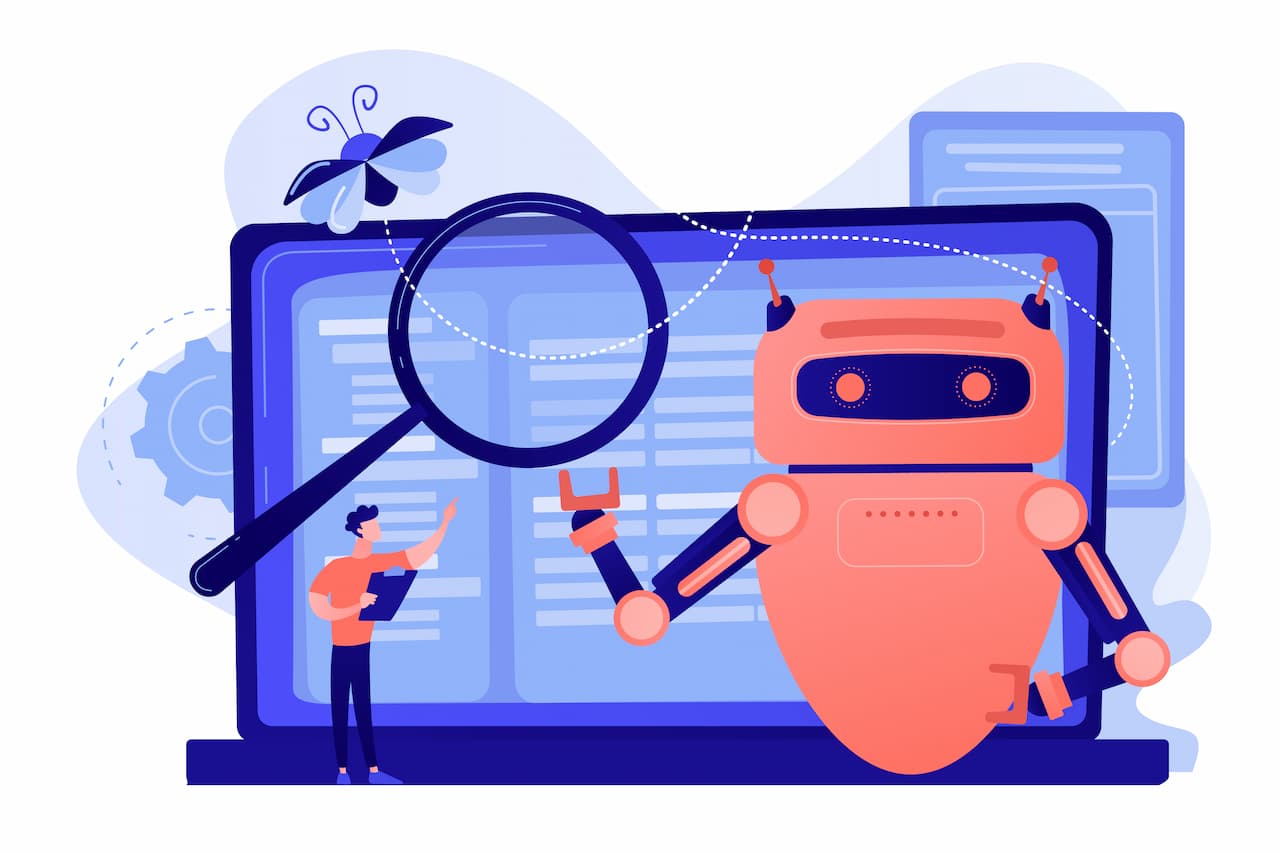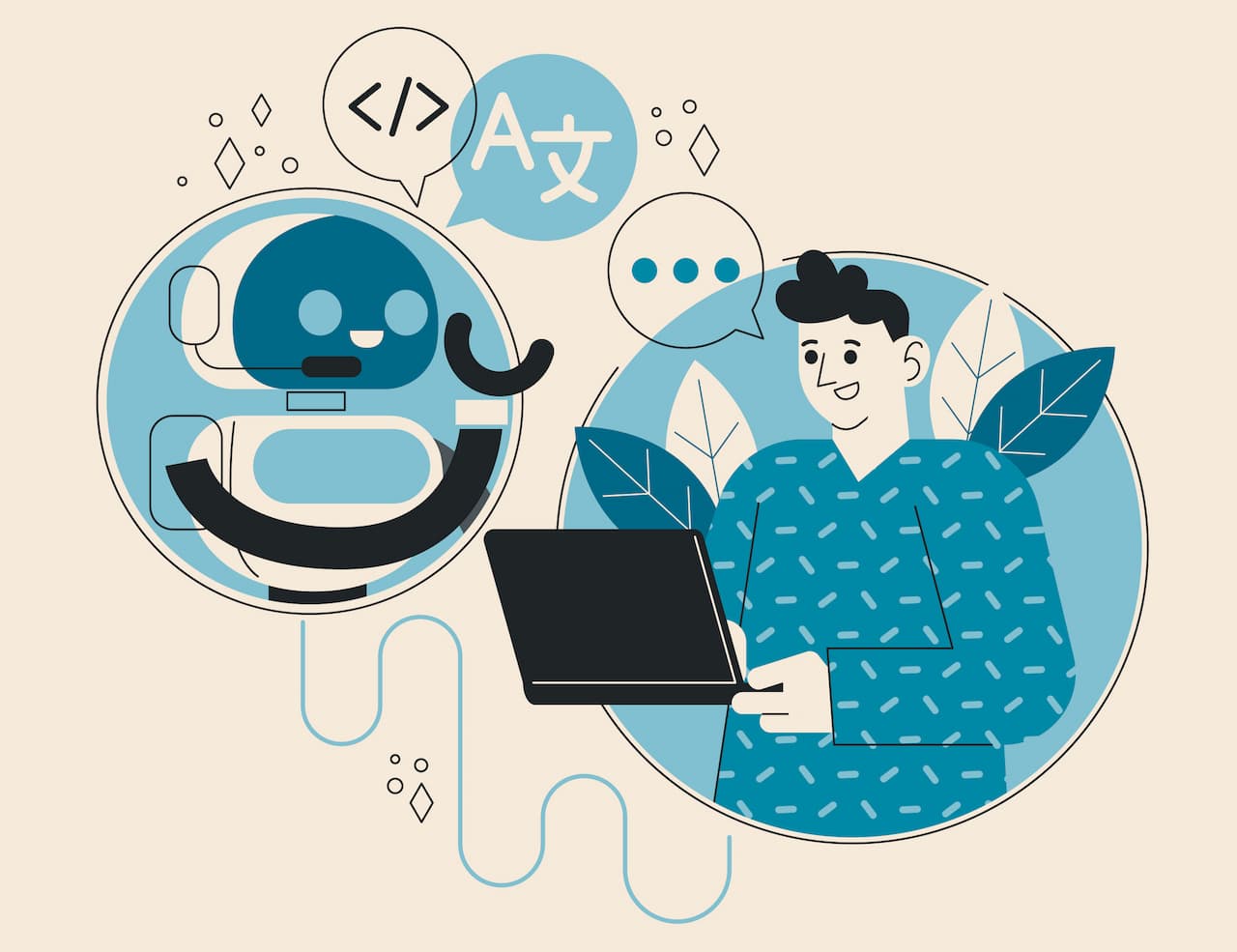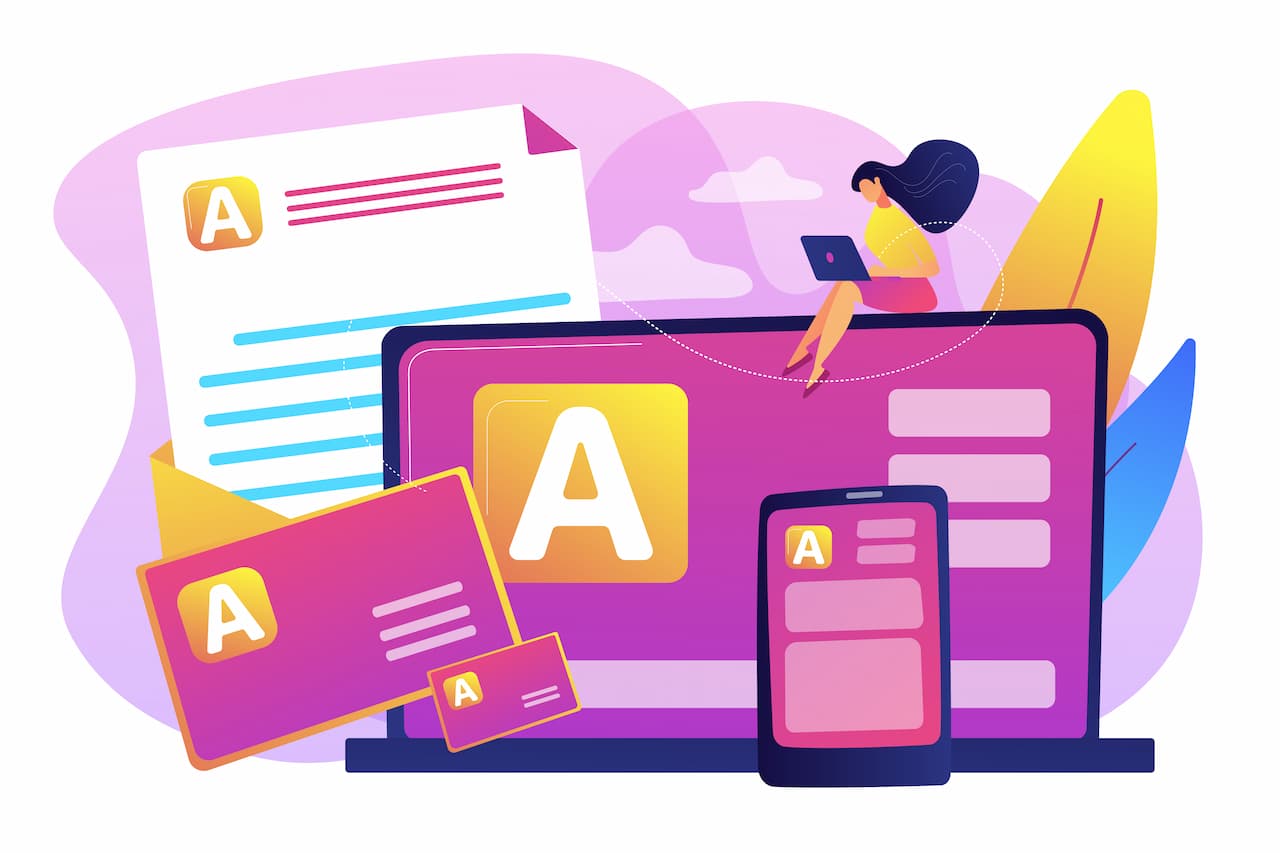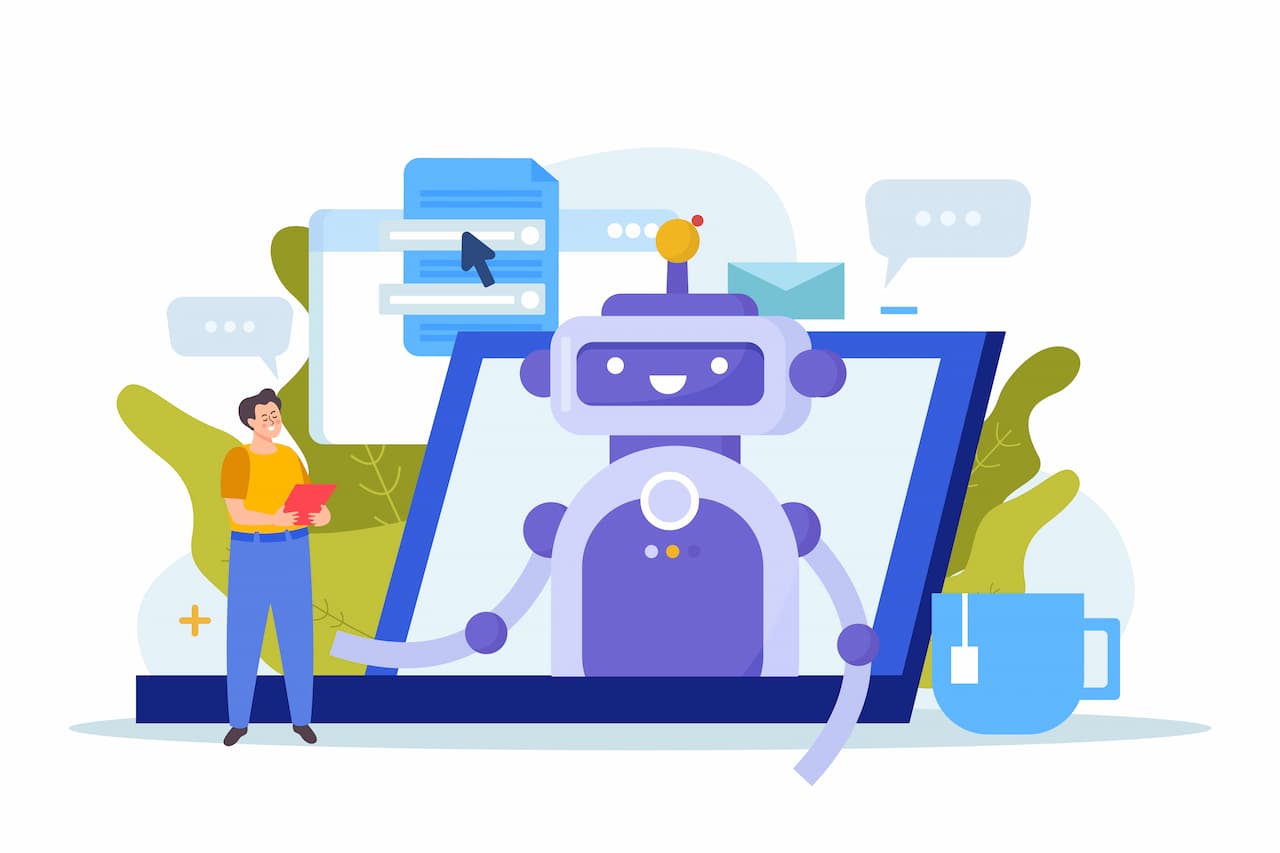
What is the Impact of AI in Translation and Localization?
Artificial Intelligence (AI) has been transforming numerous industries One of the areas where its impact is most pronounced is translation and localization. In an increasingly globalized world, the demand for accurate and efficient language translation and localization services has grown exponentially.
AI technologies, particularly machine learning and neural networks, have revolutionized the way we approach language translation and adaptation for various markets and cultures. The advancement of AI has revolutionized the process of either translation or localization.
However, it's also worth noting that AI aims to assist humans in doing their translation tasks more effectively. That said, human translation will prevail in the future. Further, when it comes to localization, machine translation often lacks cultural sensitivity. Therefore, a human touch from professional translators is crucial to ensure the texts are culturally appropriate.
In this article, we're going to explore the impact of AI in translation and localization as well as what should we do with this matter.
How Does AI Change the Landscape in Translation and Localization?

The effects of Artificial Intelligence (AI) have transformed the landscape in translation and localization, bringing about significant changes in how content is translated, adapted, and disseminated across different languages and cultures. The most significant impact of AI in translation and localization is increasing speed and accuracy.
Before AI, translation takes quite a lot of time and requires high expertise to ensure the overall quality. Today, machine translation systems can process vast volumes of text within seconds, significantly reducing turnaround times. This speed is especially valuable in industries where time-to-market is critical, such as e-commerce, news, and social media.
Furthermore, AI ensures a high level of accuracy and consistency in translations. Unlike human translators, AI systems don't suffer from fatigue or inconsistencies. This is particularly crucial for maintaining brand and message consistency across various markets.
Not to mention that AI translation models are continuously learning and evolving. They adapt to new language trends, idiomatic expressions, and cultural nuances. Over time, this leads to improved translation quality, as AI systems become more context-aware.
Another way in which AI is changing the landscape of translation and localization is by reducing costs. Automating routine and repetitive translation tasks makes AI a good solution for businesses to save on labor costs. Smaller companies and startups can also access translation and localization services that were previously financially out of reach. That said, they can, then, expand their businesses to the global market.
However, these aren't without risks that every business should be aware of. Using AI on a daily basis might cause over-reliance on machine translation, which can result in inaccuracies. In addition, integrating AI for translation and localization still needs a human touch to ensure the texts are culturally respectful.
Despite the challenges, it's evident that AI is significantly reshaping the realm of content translation and localization. As AI technology advances further, we can anticipate increasingly remarkable innovations that will further tackle linguistic obstacles, fostering global connections among individuals and enterprises.
Read also: Why Human Translation Prevails: The Irreplaceable Value of the Human Touch Translation
What is the Impact of AI on Employment Prospects in the Translation and Localization Field

The impact of AI on the job market for translators and localization experts is substantial. AI and machine translation technologies have significantly changed the landscape of these professions. Here are some key points to consider:
1. Automation of Routine Tasks
AI has the capability to automate many routine translation and localization tasks. This includes the translation of large volumes of text quickly and efficiently.
While this is advantageous in terms of speed and cost-effectiveness, it has raised concerns about the potential displacement of human translators and localization experts in certain job roles.
2. Increased Efficiency
AI-driven tools have improved the efficiency of translation and localization processes, enabling organizations to complete projects more quickly.
This can lead to increased demand for these services, potentially offsetting job losses in certain areas. AI can also help professionals handle a higher volume of work.
3. Language Expansion
AI's multilingual capabilities can open up new markets for translation and localization experts. Businesses can more easily adapt their content to reach global audiences, increasing the demand for language experts who understand both cultural nuances and technology.
4. Consistency
AI can assist human translators and localization experts in maintaining high-quality standards. It can help with terminology consistency and identifying potential errors, which ultimately benefits the end product. This aspect highlights the collaborative potential of AI and human expertise.
5. New Job Roles
The integration of AI in translation and localization has given rise to new job roles and career opportunities. These include AI trainers and developers who specialize in creating and fine-tuning AI models for language translation.
AI trainers work on curating and annotating training datasets, helping AI systems understand context and cultural nuances. AI developers focus on improving the capabilities and efficiency of AI translation tools.
6. Increased Demand for Specialized Expertise
As AI takes on routine tasks in translation and localization, there is a growing need for experts with specialized knowledge in various fields.
Technical, legal, medical, and scientific sectors require professionals who not only understand the intricacies of language but also possess domain-specific expertise.
While AI is proficient in general translation, it may lack the nuanced understanding required for specialized content. Therefore, experts who can bridge the gap between AI and domain-specific knowledge are in high demand.
Read also: Why Does the Entertainment Industry Need Translation?
Challenges and Ethical Considerations

While AI has transformed the translation and localization industry, it also presents certain challenges and ethical considerations:
Bias in AI Models
The issue of bias in AI models is a significant ethical concern in translation and localization. AI systems learn from vast datasets, which can inadvertently include biases present in the text.
These biases can manifest as cultural insensitivity, stereotypes, or favoritism towards certain groups. When such biases are incorporated into translations, it can lead to misunderstanding, offense, or even discrimination.
Therefore, it's essential to actively address and mitigate these biases in AI translation models. This can be achieved through the development of more diverse training data, ongoing monitoring, and fine-tuning to ensure that translations are as fair, inclusive, and culturally sensitive as possible.
Furthermore, the development of clear guidelines and ethical standards for AI in translation can help in creating awareness and accountability in the industry.
Loss of Human Touch
While AI-driven translation and localization provide efficiency and consistency, they may fall short in capturing the subtle nuances and context that human translators can offer. Translation is not just about converting words from one language to another; it involves understanding the culture, idiomatic expressions, and the deeper meaning behind words.
Human translators can adapt content in a way that resonates better with the local audience, preserving the original intent of the message. They also bring creativity, empathy, and a deep understanding of the intricacies of language that AI lacks.
Therefore, there is a need to strike a balance between AI and human translation, especially in cases where preserving cultural context and creativity is crucial. Collaboration between AI and human translators can lead to a more holistic approach to translation and localization, ensuring that the final output is not only accurate but also culturally relevant and emotionally impactful.
Quality Control
Quality control is a vital aspect of translation and localization, ensuring that the final output meets high standards of accuracy and consistency. While AI systems can offer speed and efficiency in translation, there is a need for quality control measures to address potential errors or issues that may arise during the process.
AI-driven translations may sometimes produce mistranslations or unintended ambiguities, especially when dealing with highly technical or context-dependent content. To mitigate this challenge, game publishers need to implement quality assurance processes that combine both AI-driven and human oversight.
Human proofreaders and editors play a crucial role in reviewing and fine-tuning translations to catch errors, inconsistencies, or nuances that automated systems might miss. Establishing a feedback loop for continuous improvement is also important, as it allows for the identification and correction of recurring issues in AI-generated translations.
Ethical Decision Making
Ethical considerations in AI translation and localization go beyond bias and privacy. They also encompass the responsible use of AI. Organizations must make ethically informed decisions regarding the extent to which AI should be used in translation and localization.
That includes decisions about whether AI is suitable for specific content, contexts, or industries, as well as when human intervention is necessary to ensure accuracy, cultural sensitivity, or legal compliance.
There's an ethical responsibility to disclose to users and clients when AI is used in translation and localization processes, as transparency is essential. Moreover, organizations need to continually assess and adapt their ethical guidelines to keep pace with evolving AI capabilities and changing societal expectations.
Privacy Concerns
Managing sensitive data during the translation and localization process can pose significant privacy concerns. Many businesses, particularly in highly regulated industries like healthcare, finance, or legal services, deal with confidential and personal information in their documents.
AI translation systems must be meticulously designed and configured to ensure data privacy and security. There is a risk that if not handled properly, sensitive information could be exposed or mishandled during the translation process.
Data breaches and compliance violations could have severe legal and reputational consequences. To address these concerns, organizations need to implement robust data encryption, access controls, and anonymization methods.
Additionally, compliance with relevant data protection regulations, such as GDPR (General Data Protection Regulation), HIPAA (Health Insurance Portability and Accountability Act), or other regional laws, is crucial to safeguard user and client data.
Read also: Is Localization Important For A Business?
Tips to Use AI for Translation and Localization Effectively

AI-powered translation and localization tools have the potential to greatly enhance your efficiency and accuracy in reaching global audiences. Here are some tips to help you get the most out of these tools:
1. Choose the Right Tool
Select a translation and localization tool that aligns with your specific needs. Consider factors such as the languages you'll be working with, the complexity of your content, and your budget. Different tools excel in various areas, so it's essential to find the one that suits your requirements.
2. Customization and Training
Many AI tools allow for customization and fine-tuning. Train your AI model with relevant data to make it better understand your specific industry, products, or services. Customization can significantly improve translation and localization quality.
3. Understand the Limitations
AI-powered tools have made impressive strides, but they are not flawless. They may struggle with context, idiomatic expressions, or nuanced cultural references. It's crucial to understand their limitations and be prepared to review and revise their output when necessary.
4. Human Oversight
While AI can handle many tasks, human oversight is still essential. Skilled human translators and localization experts can catch nuances, and cultural sensitivity issues as well as ensure that the final content meets high-quality standards. AI can assist humans, but it doesn't replace their expertise.
5. Glossaries and Style Guides
Create and maintain glossaries and style guides to provide clear instructions for both AI systems and human translators. This ensures consistency in terminology and writing style, especially when working on large or ongoing projects.
Final Thought
The impact of AI in translation and localization cannot be overstated. AI has revolutionized the industry, offering improved accuracy, speed, and efficiency while reducing costs. However, in the ever-evolving landscape of language and communication, it's crucial to recognize the pivotal role that human expertise and linguistic nuance play in translation and localization.
While the impact of AI has made significant strides, nothing can replace the artistry and cultural sensitivity that only professional human translators can provide.
At Digital-Trans Asia, we understand the essence of preserving authenticity in game localization. Our team of dedicated experts utilizes cutting-edge CAT tools to enhance productivity while keeping human translators at the forefront.
If you're seeking high-quality game localization services that fuse technology with human precision, look no further. Reach out to us via email at @digital-trans.asia and let's embark on a journey to bridge cultures, languages, and worlds together.
Read also: [10 Steps to Becoming a Professional Translator](Read also: 10 Steps to Becoming a Professional Translator )